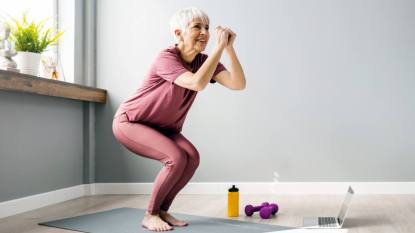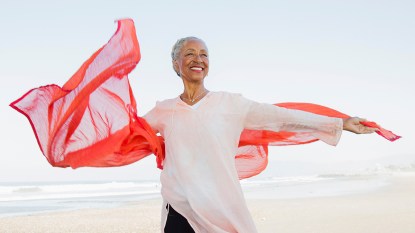The Key to Feeling Younger Than Your Years? Reversing Your Biological Age — Here’s How to Do It
Aging experts say a few little tweaks to your daily routine can help your body act years younger
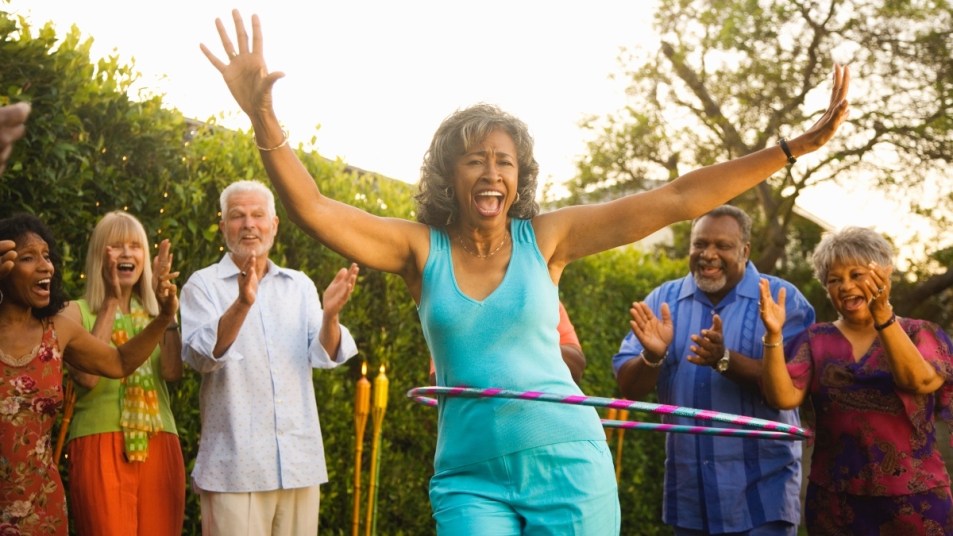
As we age, we want to have more life in our years — not just years in our life. Right now, research on biological age is trending, and for good reason. By searching for science’s Fountain of Youth, we can find out how to stay healthy, happy and more vibrant well into our golden years (and beyond).
But what exactly is your biological age, and why does it matter? Biological age is how old your body thinks it is. Chronological age is how old you really are, or the number of candles on your birthday cake, says aging expert Jennifer Graves, MD, PhD, Director of Neuroimmunology Research at the University of California San Diego. “Many factors can influence your biological age.” Dr. Graves says. “These include your genes, your mental health, your lifestyle and any chronic diseases or health conditions you may have.”
Aging itself is not a disease, she explains. But advanced age — coupled with stresses from the environment, illness and lifestyle habits — causes some cells in the body to lose functioning. This may impair their ability to divide and replicate. And when combined with inflammation, that can be the trigger for new or worsening diseases. The good news: It may be easier than you think to rewind your biological age and feel younger than your years.
How do our cells know they’re getting older?
Aging research gets right down to the molecules: the building blocks of the cells. Dr. Graves studies telomeres, which are proteins that form a cap at the end of each chromosome in every cell of our bodies. These little caps protect the chromosome from breaking down. However, they become shorter every time the cell divides, so they serve as kind of a yardstick to measure how much the cell has aged. While good old-fashioned aging will shorten our telomeres, other things can hasten the process, too. That includes certain diseases, smoking and chronic stress.
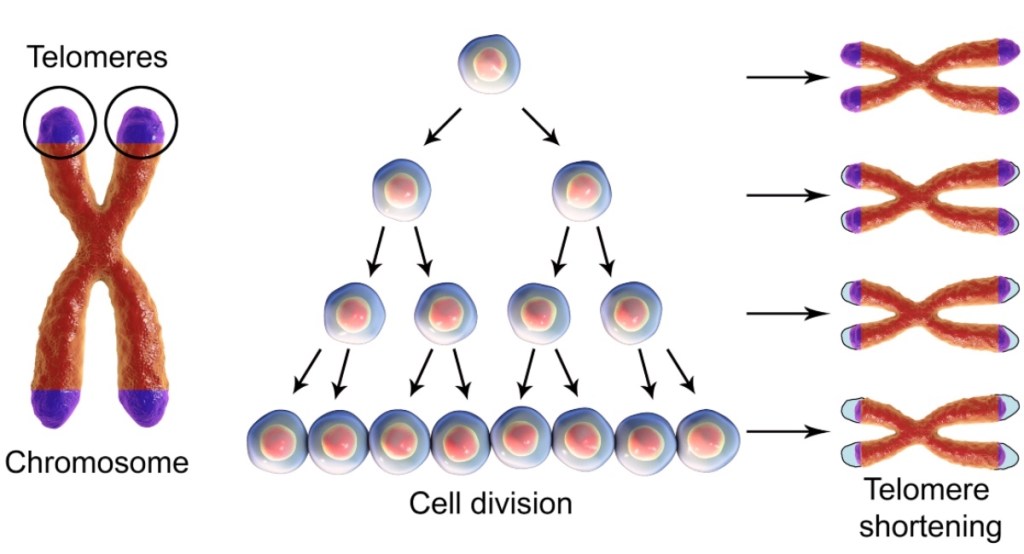
Related: Chronic Stress? Experts Say These Delicious Cortisol-Lowering Foods Can Help
Age really is just a number
How can you calculate your biological age? Based on data from the National Health and Nutrition Examination Survey (NHANES), researchers created a 10-point scoring system to do just that. This system includes things like cholesterol levels, blood pressure, lung function and blood tests that reflect heart, kidney and liver function.
Aging expert Daniel Belsky, PhD, of the Aging Center at Columbia University, used the scoring system to study 1,000 people, all aged 38. He found that their biological ages varied from 25 to as high as 60. Factors associated with a lower biological age were:
- Genetics: family history, such as having grandparents who lived to ripe old ages
- Childhood: higher socioeconomic status, better diet and fewer traumatic events as a child
- Lifestyle habits as an adult: a healthy diet, regular exercise and positive mental health
In the lab, Dr. Belsky has also examined how fast a person ages. “We recently developed a genetic blood test to measure the pace of aging based on a single blood sample,” he says. “We found that the bodies of older adults (people in their 50s and 60s) tend to age about 10% faster than do younger adults (people in their 40s).”
But in happy news, this research showed that that healthier older adults are actually aging more slowly (biologically) than the unhealthier younger adults. “Staying active, healthy sleep and eating a balanced diet are still the best pieces of advice we can give,” Dr. Belsky adds.

Calculating your biological age
Interested in calculating your biological age? While you can send blood or body fluid samples to a lab, these tests can be pricey (some are $500) and are often tied to selling you other products and services. For now, experts suggest sticking with simpler calculators, mainly to satisfy your curiosity. Two options:
- Biological-Age offers a simple calculator that is free and does not require login.
- Body and Soul, an Australian site, offers a Real Age Calculator that does not require login. We tested it and got a similar result as the Biological Age calculator.
Other than what your doctor is already checking, you don’t need a sophisticated blood sample to live better and feel healthier. In fact, longevity pioneer Steven Horvath has said he was able to lower his own biological age by 4 years with simple steps like eating more veggies and taking a brisk walk every night after dinner.
How to reverse your biological age
Living healthier (not just longer) means getting a leg up on some of the big diseases that start to hit harder when we get older. The Centers for Disease Control and Prevention (CDC) notes that more than 70% of people over age 65 have two or more chronic conditions such as arthritis, diabetes, cancer, heart disease or stroke. But some studies show that delaying one age-related disease may help to stave off others. Ready to boost your health and feel younger than your years? Here’s how to reverse your biological age.
1. Try ‘exercise snacks’
People who exercise regularly into old age are, well, younger. “Exercise helps your body fight many diseases,” says rehabilitation expert Robert Motl, PhD, professor of kinesiology and nutrition at the University of Illinois Chicago. “When you exercise, all body systems adapt and become stronger, including your brain.”
And you’re never too old or out of shape to start exercising, Dr. Motl stresses. “Starting an exercise program can begin to reverse the many negative effects of a long-term sedentary lifestyle and start providing health benefits for living a full and robust life,” he says.

The hitch: Just telling people to “go exercise” usually doesn’t work, Dr. Motl admits. He advises people to start slowly, with manageable amounts of exercise. Think of them as “exercise snacks”, or little chunks of movement you can easily work into your day. “The phrase ‘no pain, no gain’ is not your goal!” he adds. His rehab program uses this formula for beginners:
- Start with 10 minutes of walking at a modest pace, 3 days per week, for 2 weeks.
- Over time, gradually add minutes to your routine (such as 5 minutes per session) until you reach 30 or 40 minutes per session.
- If you can do this 3 days per week, you are doing great, he says. “Once you adapt, then maybe add 1 to 2 more days each week, or start doing some strength training.”
Tip: If back pain is keeping you from enjoying more strolls, click through to learn how to outsmart lower back pain when walking.
2. Start a potluck
You may have seen intermittent fasting trending on social media as a way to slow aging. But let’s be real: Many of us just don’t want to live that way. We want to enjoy the foods and drinks we love! A more balanced approach: Scaling back on less-healthy fare and making nutritious meals more fun. The National Institute on Aging suggests:
- Choosing foods that don’t have a lot of sugar, saturated fats, and sodium.
- Trying to stick to your daily calorie needs. If you’re 60 or older and you’re mostly inactive, you need about 1,600 calories a day. If you’re moderately active, that number is about 1,800.
- Starting a healthy-food potluck with your friends. Not only will you get to try nutritious new dishes that tickle your tastebuds and nourish your body, but you’ll get to clock more quality time with the folks you care about.
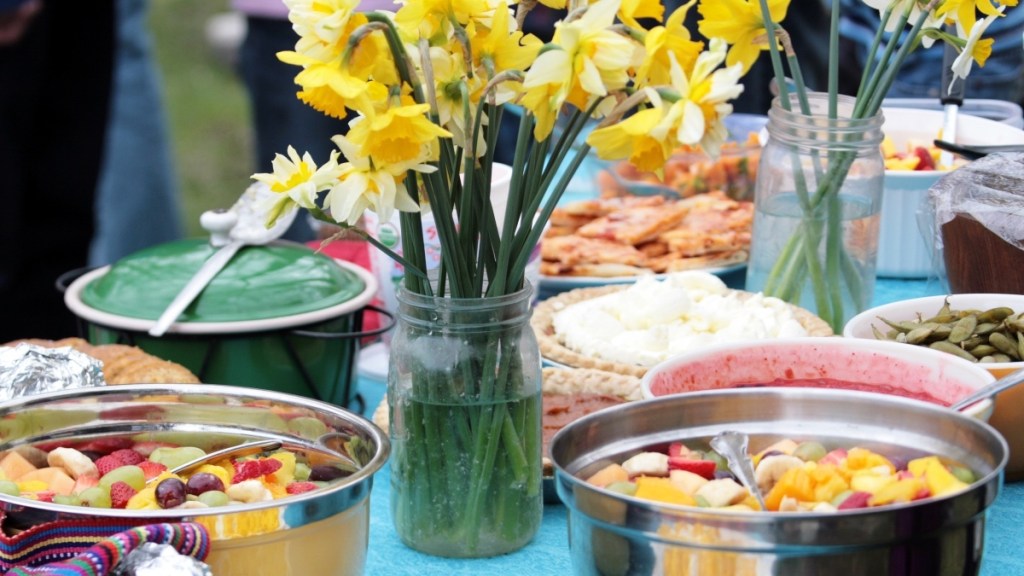
Related: Whipped Cottage Cheese: An Ultra-Creamy + Delicious Protein Superfood — 3 Meal Ideas
3. Schedule an eye exam
Having a fall is one of the fastest ways to go downhill health-wise as we age. This can be true even for older adults who are active and athletic. One of the easiest ways to slash your risk of taking a tumble is by scheduling an eye exam if you’re overdue. Blurry or diminished vision can make it hard to spot tripping hazards, like your dog’s toy on the floor or the uneven curb on your sidewalk. (Click through to see the early warning signs of macular degeneration.)
4. S-t-r-e-t-c-h
Maintaining flexibility in your muscles and joints is key to helping you staying active over time. And yoga is widely considered the number-one way to stay limber as we age. In-person classes are available in most areas, and many are targeted for beginners or people with health restrictions. Or you can cue up a free class from the comfort of home, such as this 30-minute yoga session for adults over 50.
5. Join a pickleball club
Younger adults are apt to explore and try new things. But as we age, we tend to stick to familiar people, places and activities. Now, research in Scientific Reports confirms that staying young at heart is good for you. People with younger biological bodies also have younger-looking brains. And optimism, resilience and social engagement are key to aging well. “We expect that meaningful social connections and having a sense of purpose are helpful to staying biologically young,” Dr. Belsky suggests.
To channel a biologically younger, healthier you, invite a friend on a day trip to a town you’ve never visited before. Or join a community pickleball club to challenge yourself to a new sport while making friends. The bottom line: You don’t need to act your age!
For more ways to stay healthy and feel vibrant at any age:
Joint Pain + Rash May Be Early Warning Signs of Psoriatic Arthritis — Here’s What Can Help
What to Drink to Lower Blood Pressure: MDs Reveal the Best Heart-Smart Drinks
It’s Not Your Imagination: Menopause Brain Fog *Is* Real — MDs Reveal How to Sharpen Your Thinking
This content is not a substitute for professional medical advice or diagnosis. Always consult your physician before pursuing any treatment plan.


